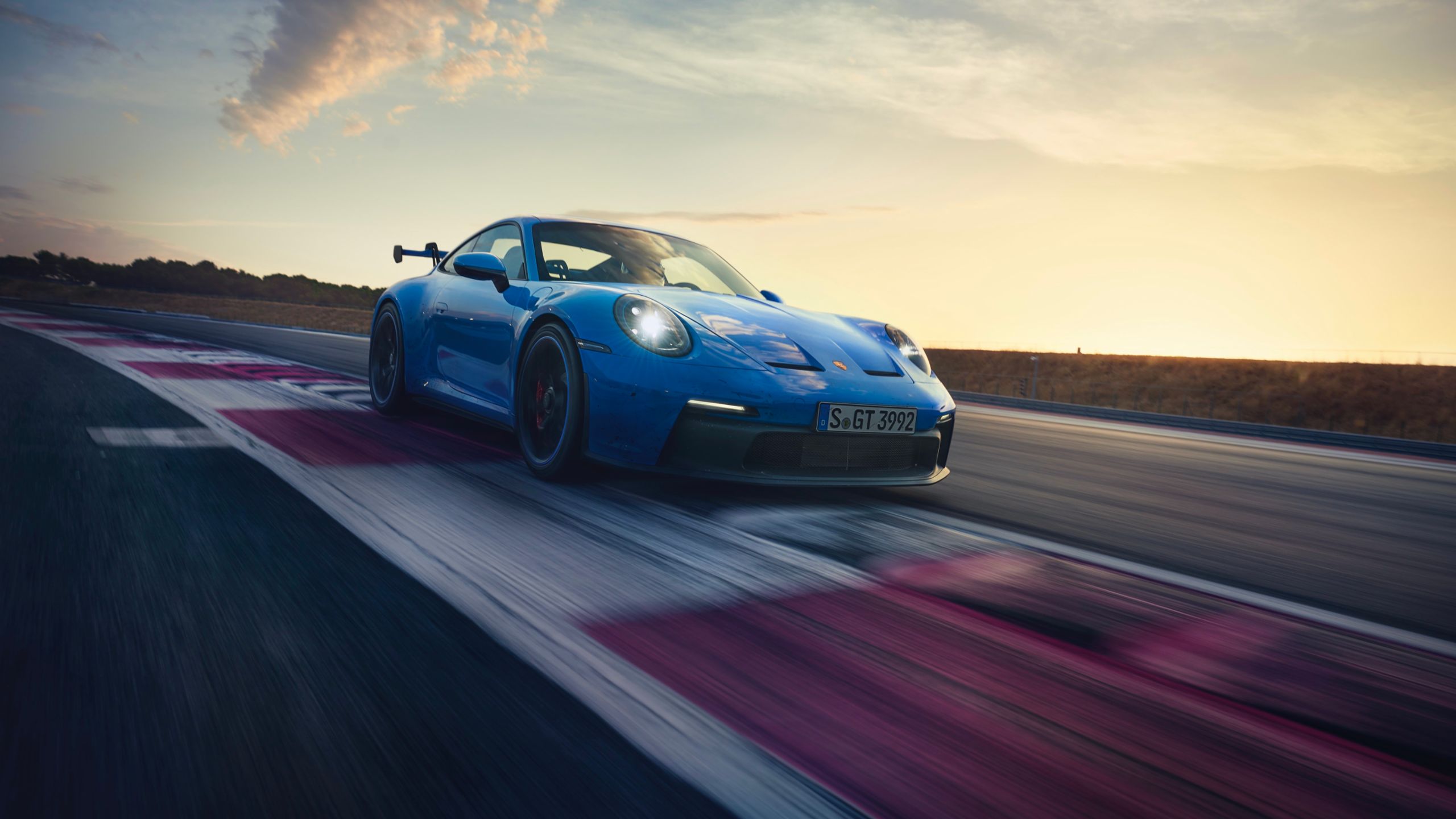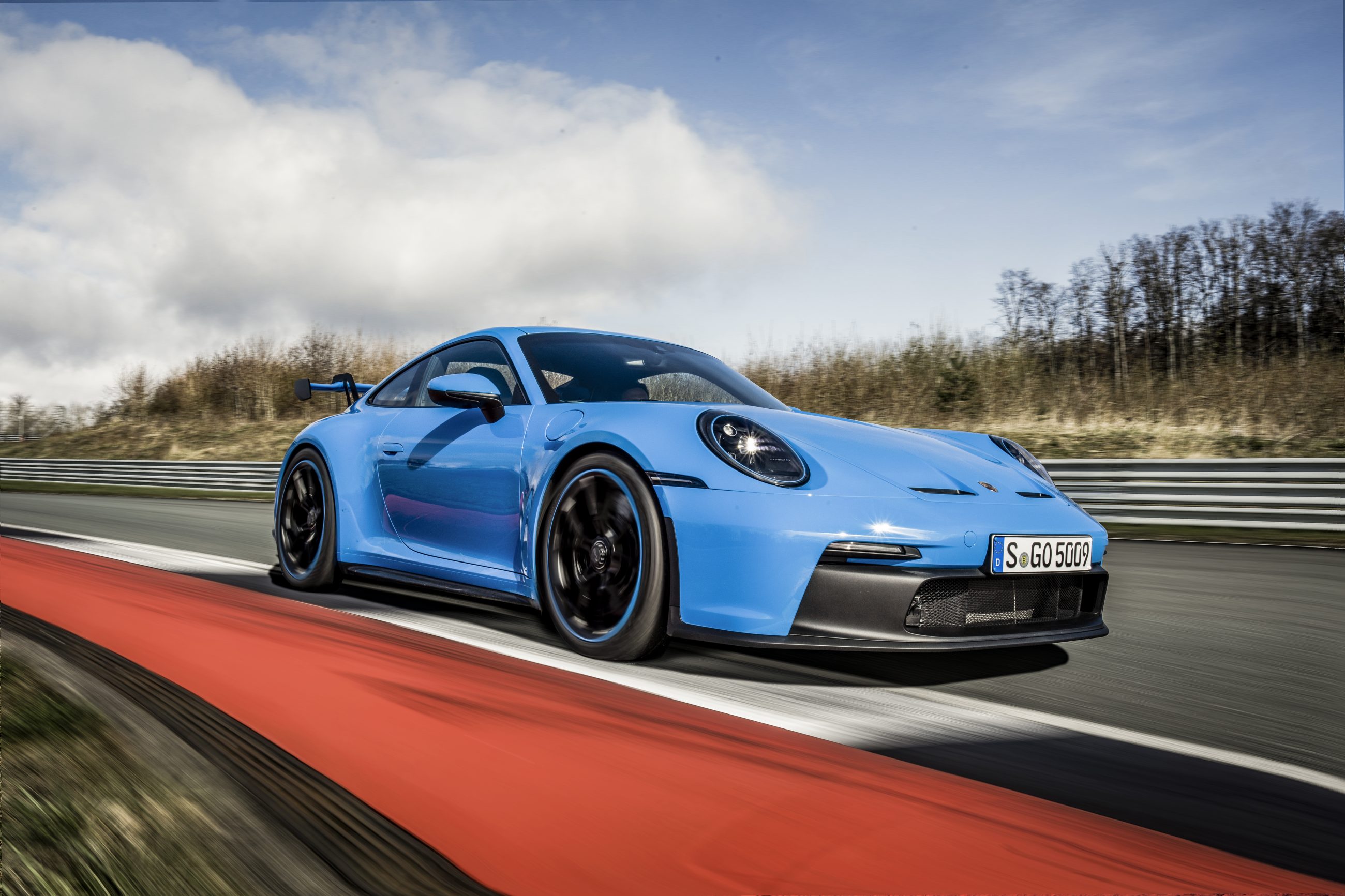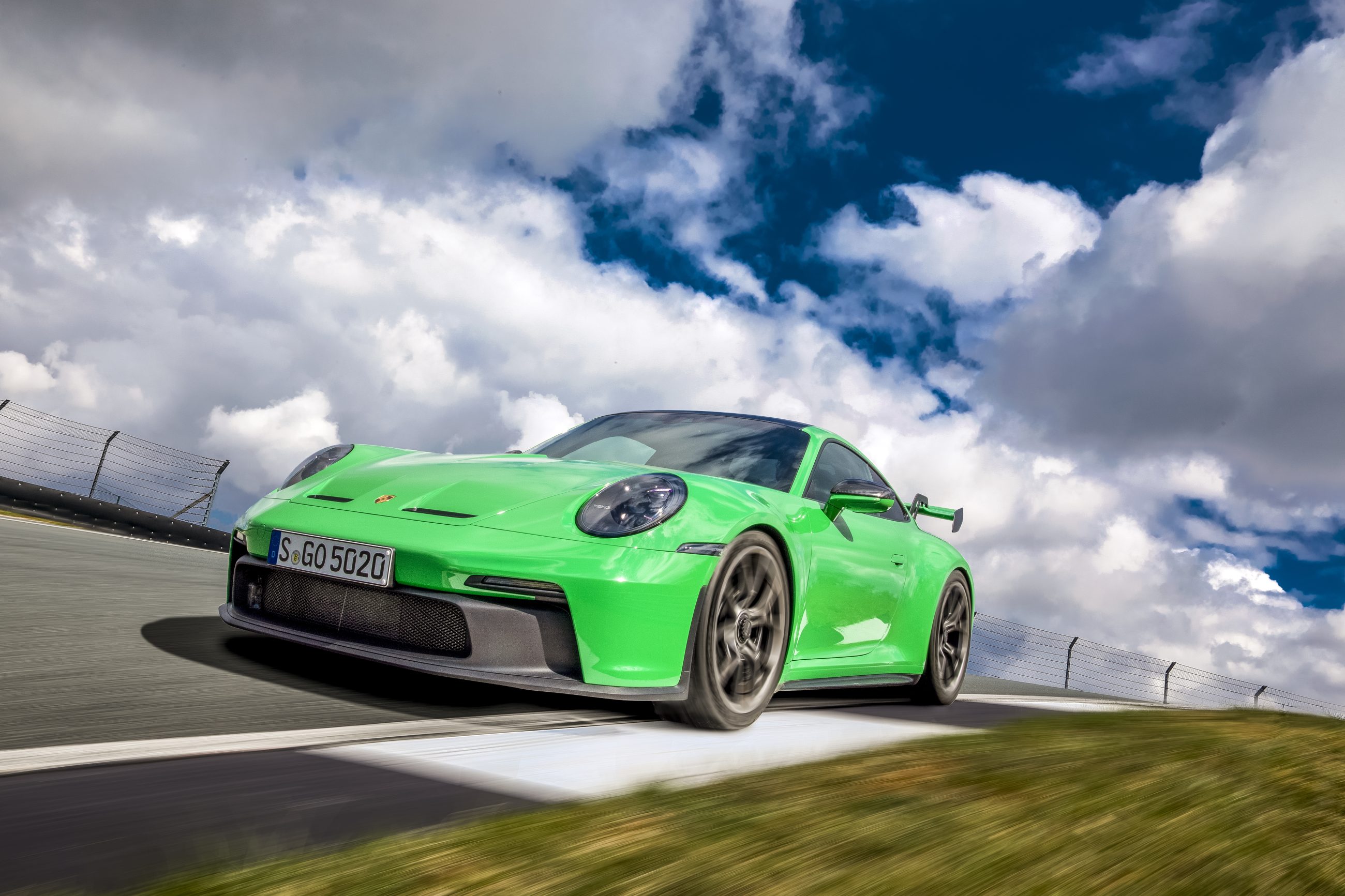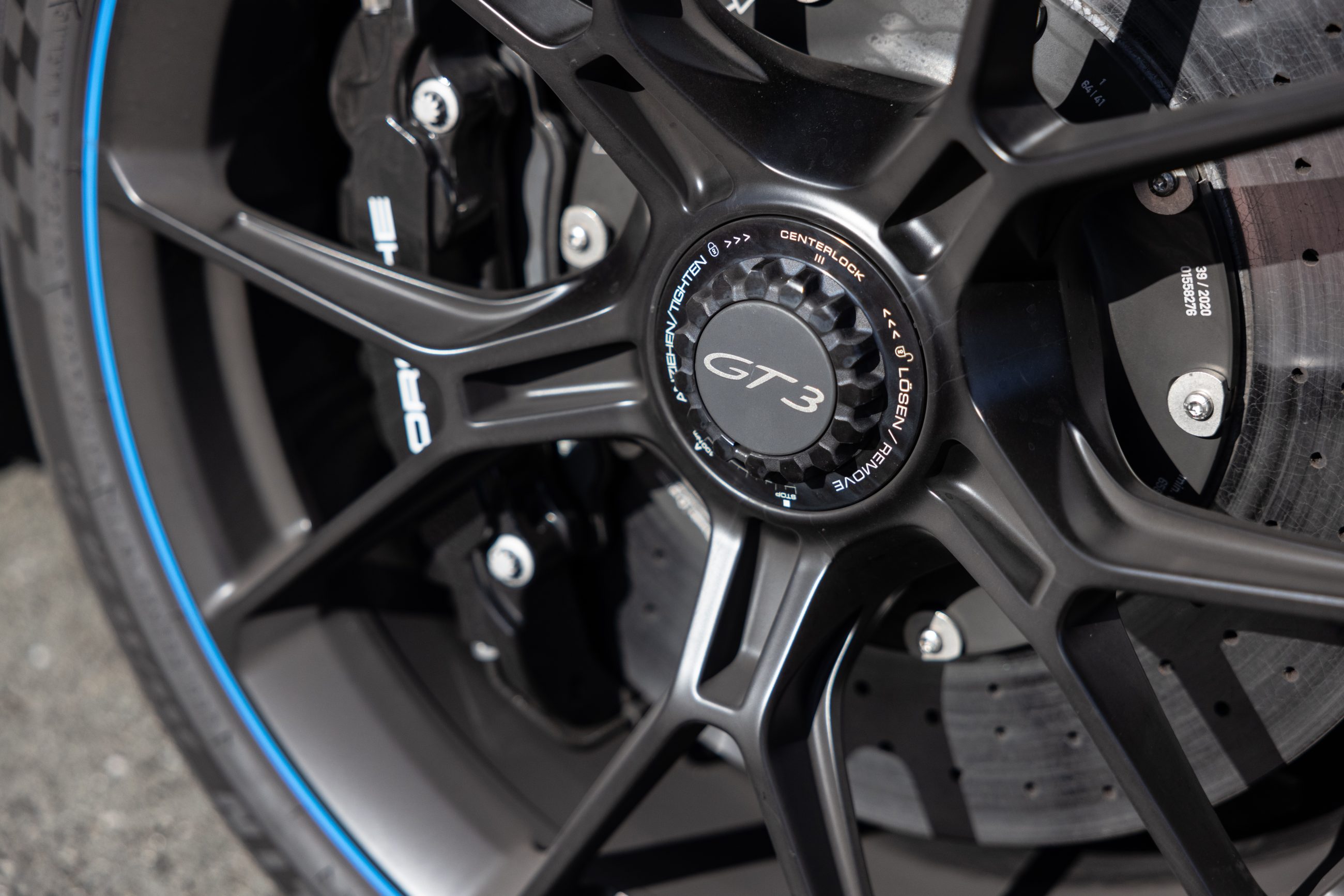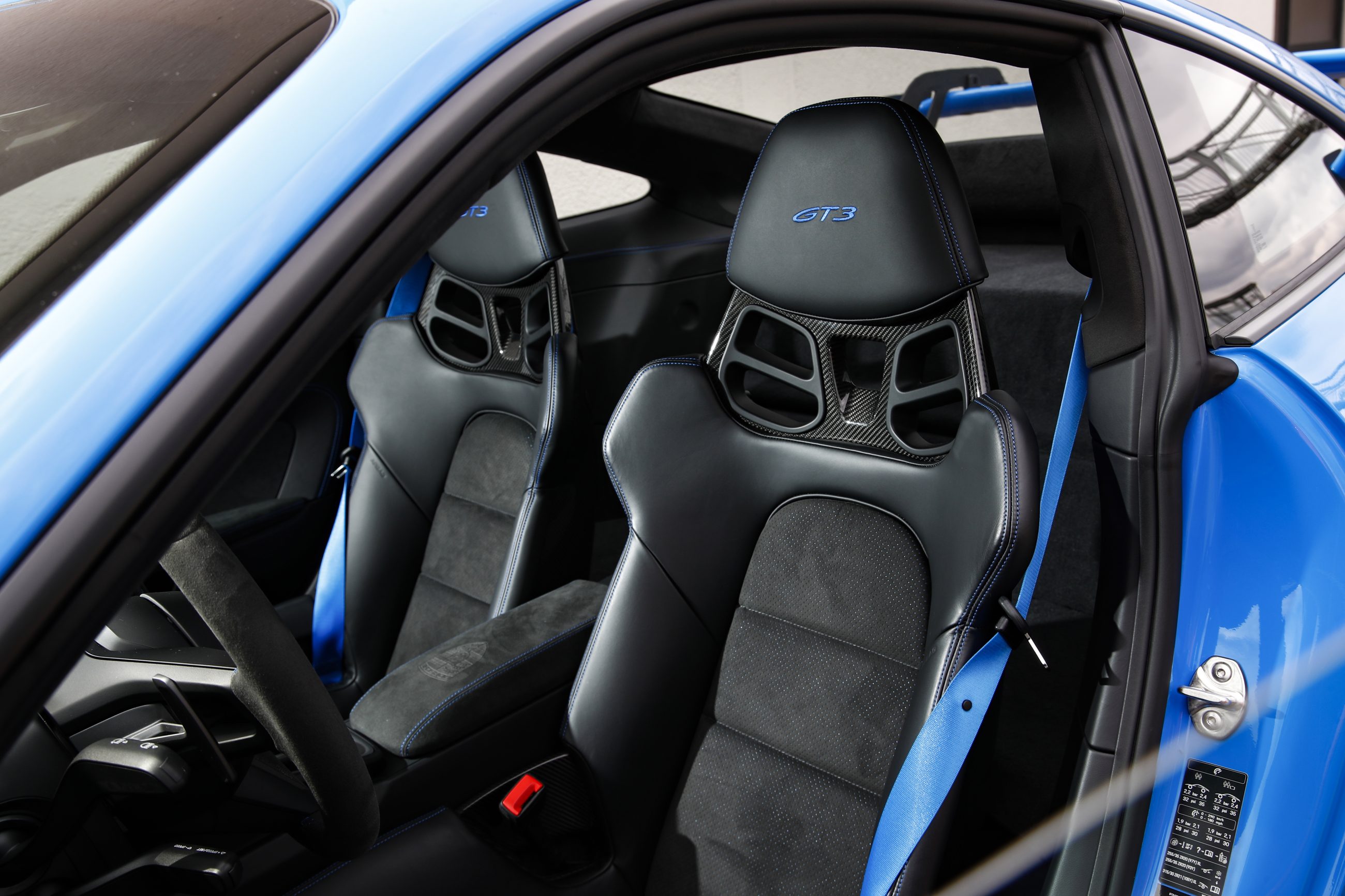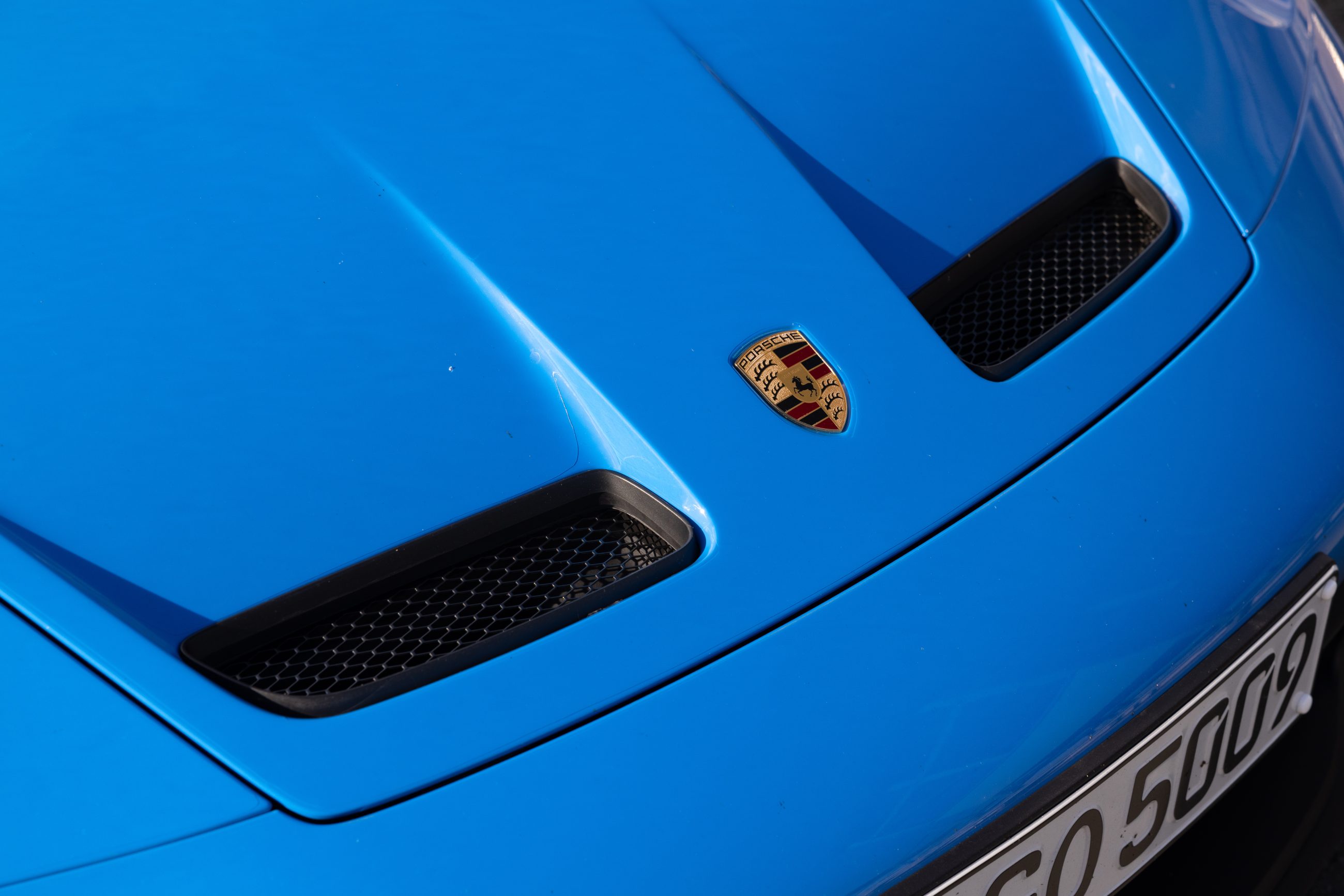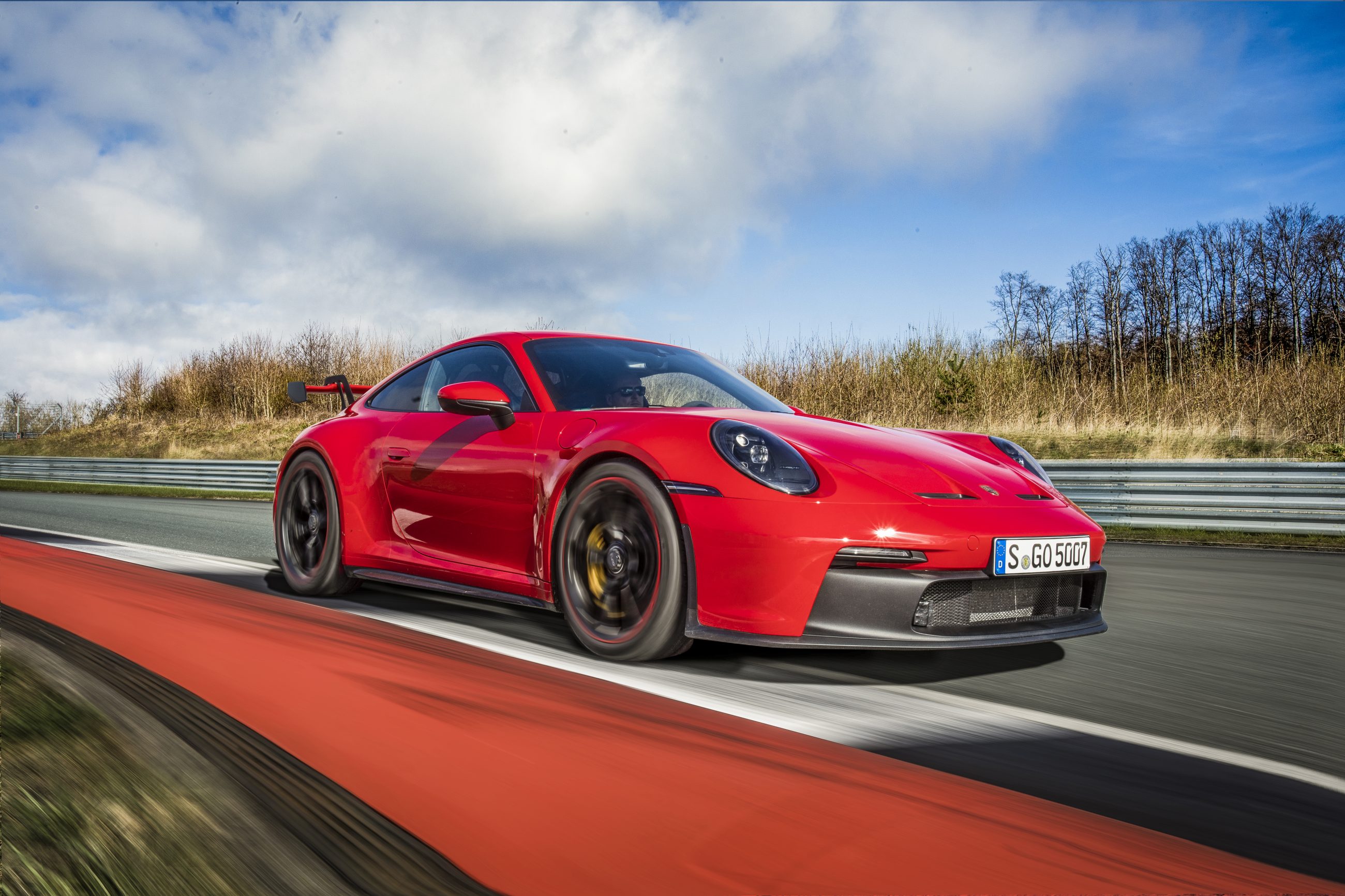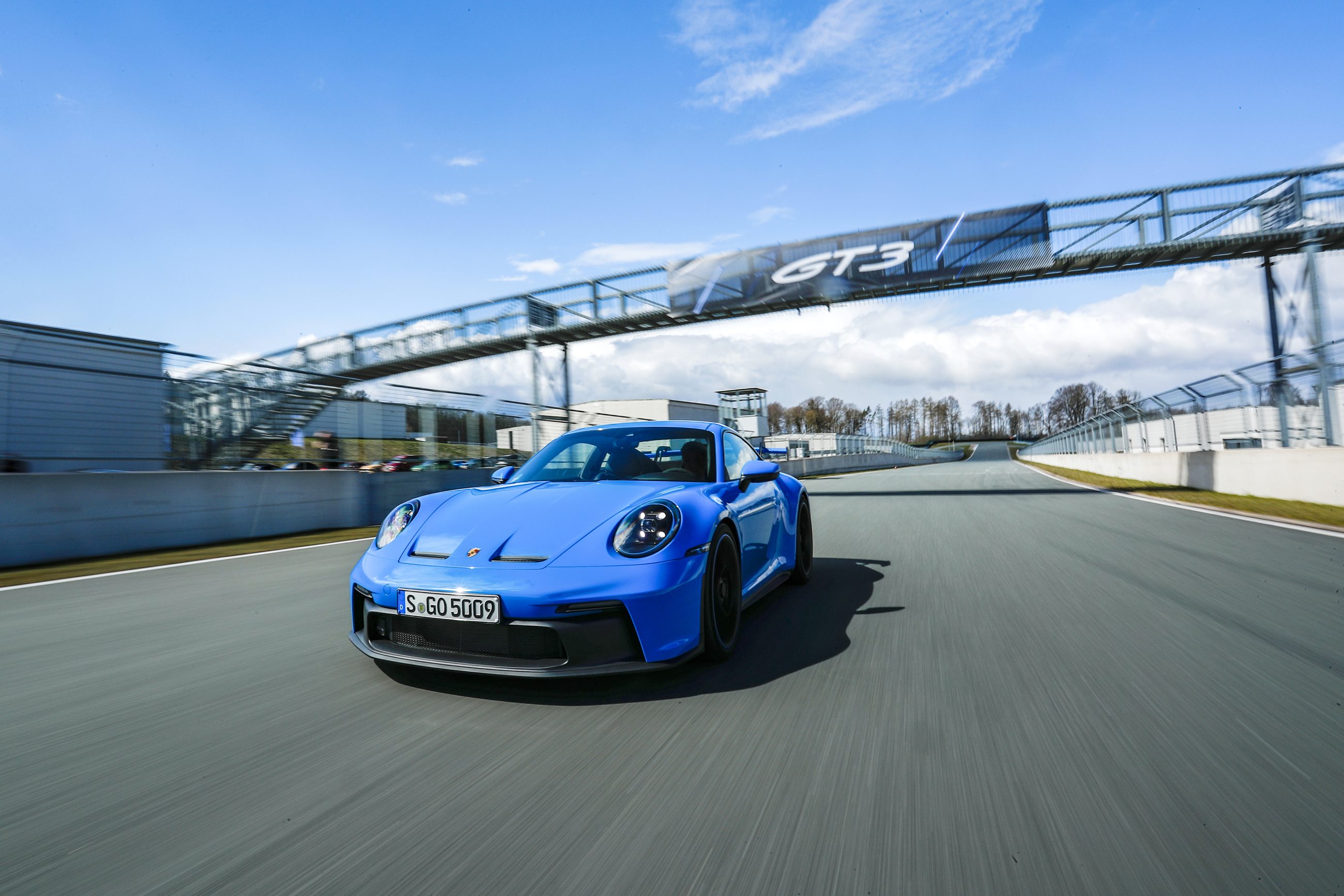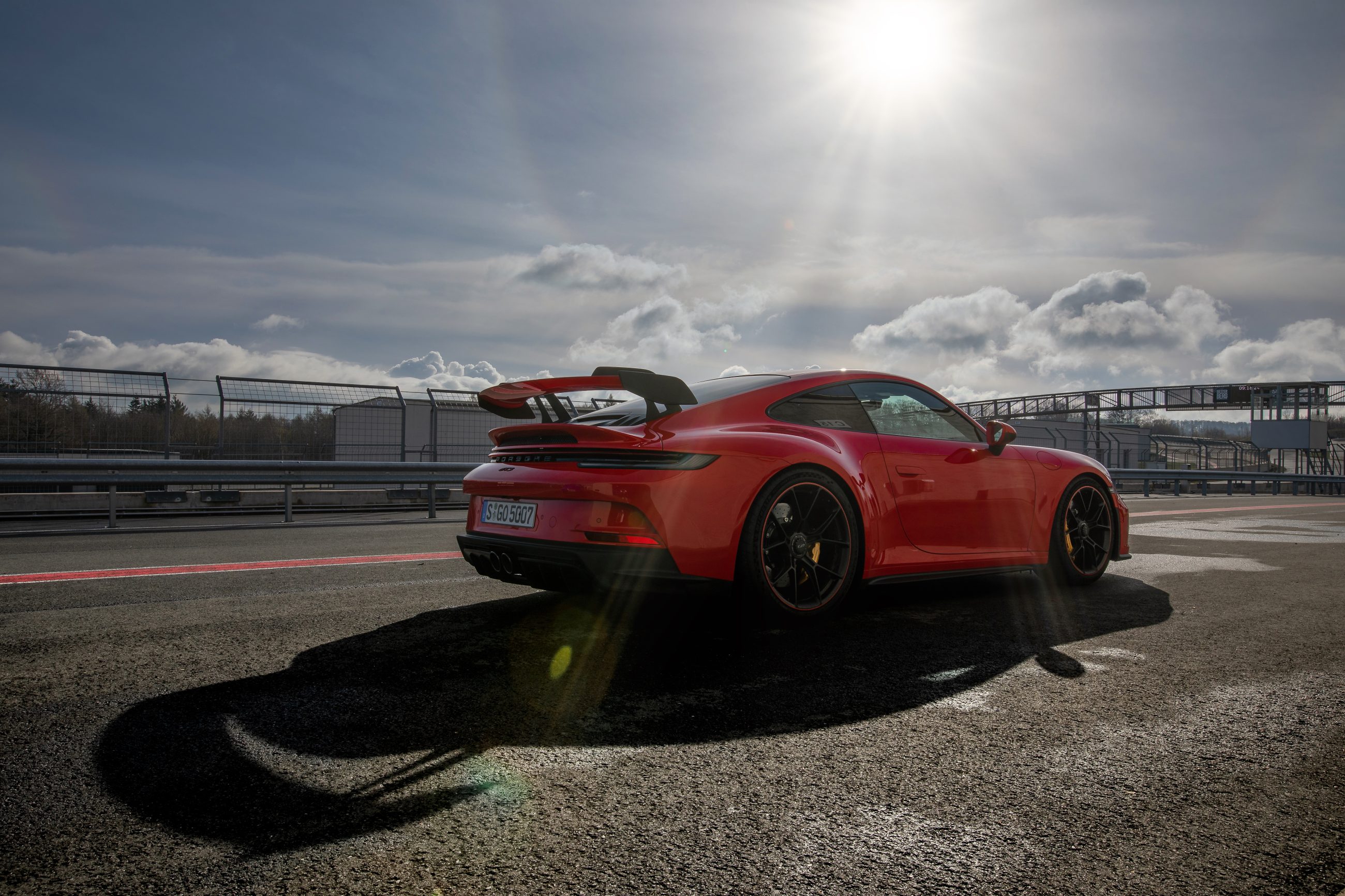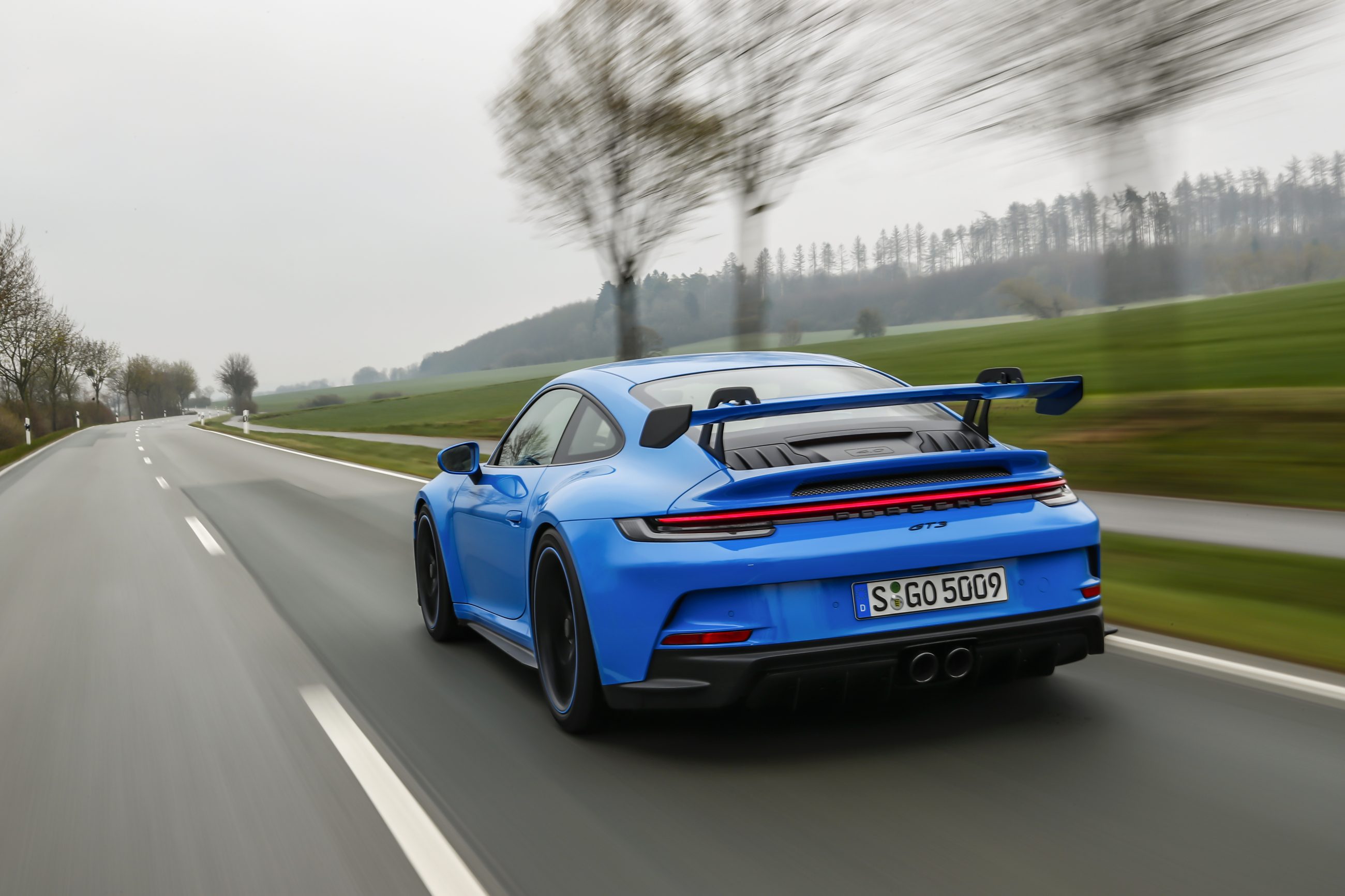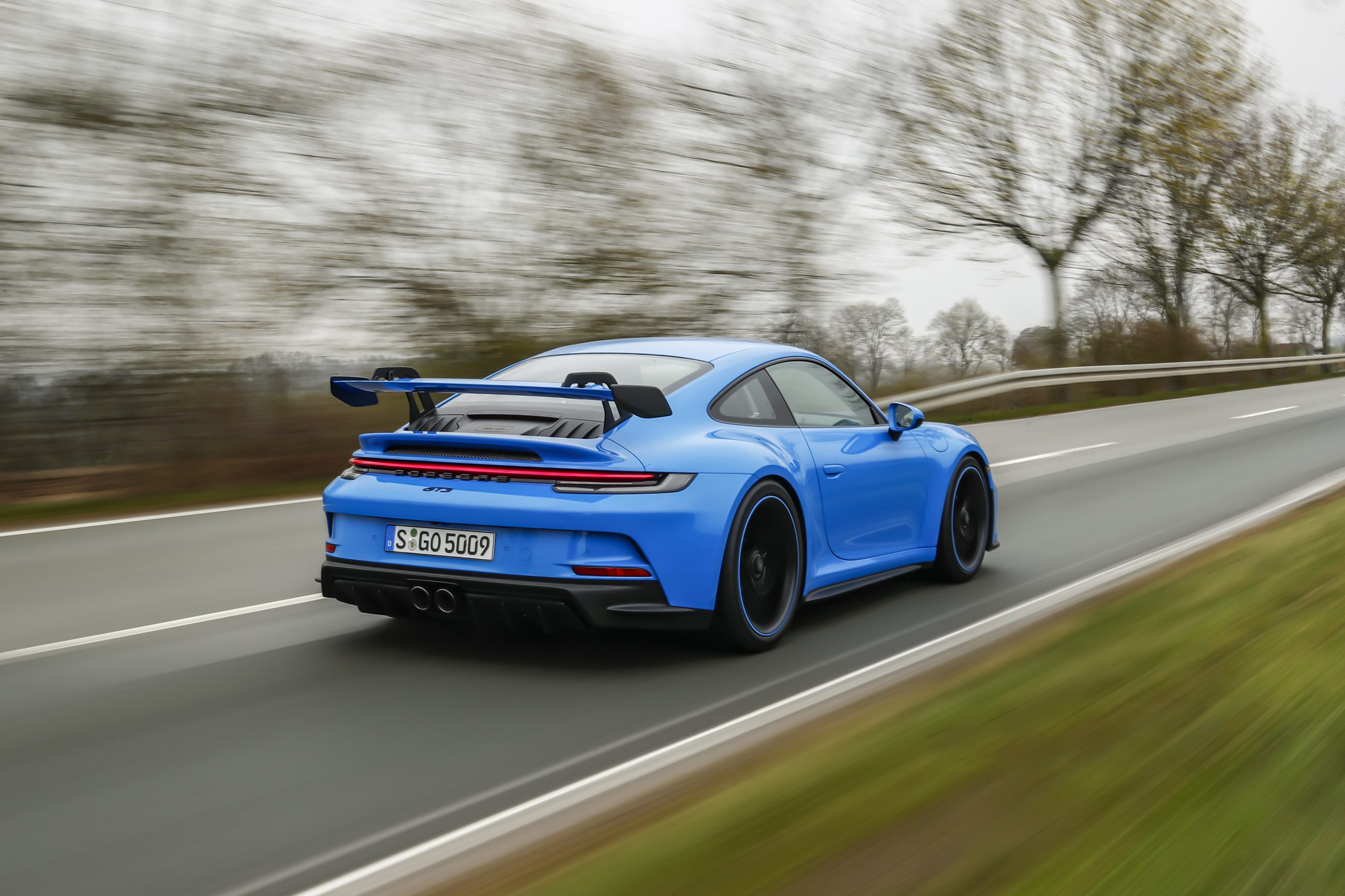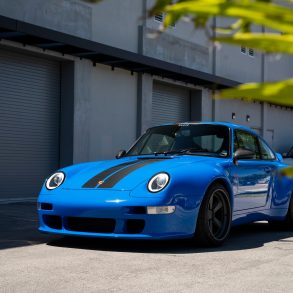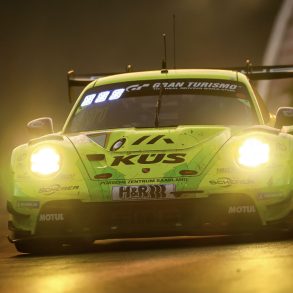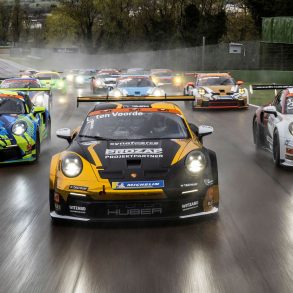Porsche 911 GT3 (992) – Reviews, Pricing, Specs & Buyers Guide
If you are lucky enough to get an allocation on a 992 GT3, you should do whatever you can in your power to buy it. It is that good. What is sad of course, is that getting an allocation is almost impossible and the slots are selling for $50-$100k over sticker. The 992 GT3 becomes the seventh iteration of one of Porsche’s most established and beloved automobiles and it continues to embody the spirit of previous GT3 models by amalgamating all that is awesome about the 911 – and the Porsche brand – in a single road car. It is perfect. And as always, Porsche pushes the boundaries, innovating and making the platform better in all areas.
The 992-era 911 GT3 confirms that Porsche is prepared to go to astonishing lengths to keep the hardcore faithful happy. The engine is a naturally aspirated 4.0-litre that revs to 9,000 rm and has little in common with the unit found elsewhere in the 992 range and a lot to do with the one used in Porsche’s GT3 Cup racing car. Power is up a modest 10bhp to 503 bhp, torque to 347 ft lbs. That’s more than enough. It’ll accelerate to 62mph in 3.4 seconds, and onto a top speed of 198mph. Also more than enough.
The engine is constructed on the same production line as the competition unit, features six individual throttle butterfly valves, and there’s a new stainless exhaust system. In other words, this is a 911 variant with its own bespoke power unit, that deliberately eschews the technology used by its siblings, presumably because that’s what 911 GT3 customers prefer. No forced induction. Similarly, you can have it with a six-speed manual or a seven-speed PDK, the manual proving more popular in the US for some reason than the dual-clutch automatic (it’s 50/50 in the UK). The PDK is 20kg lighter than the one used elsewhere because it has one less ratio, and offers torque vectoring via an electronically controlled diff lock. The manual has a mechanical rear diff lock, and the hardware gives it a weight advantage over the bulkier PDK of some 16.8kg.
The new GT3 has a bigger footprint, including bigger wheels, bigger brakes, and wider rims. The extensive use of lightweight materials throughout have kept the weight the same as its predecessor. There is lots of lightweight stuff in the car, including the carbon-fiber roof, carbon-fiber hood and ultra-thin glass. The end result is a weight of just 1,435 kg, hitting the sweet spot for a driver’s car and perfect track tool for the weekend. It is truly remarkable the Porsche engineers helps the 992 GT3 achieve the same weight as its predecessor, but is loaded it with a lot more technology and capability.
How is this achieved? He points to the carbon-fiber hood, roof and rear wing mentioned earlier by Walliser. Also introduced were some things that weren’t shown up close, such as a super lightweight battery, lighter wheels, carbon-fiber cross members, lightweight interior appointments, etc. The weight reduction was very much
For anybody who has driven a GT3, you immediately understand how these details make a GT3 so special. You notice it when driving in the countryside, or at the race track. That is the essence of the GT3 and what has made it so special over all the years. The fact that all these little details, all these innovations and all the focus leads to the creation of the ultimate sports car. When Andreas Preuninger (Director of Porsche’s GT program) drove the GT3 from behind the curtains and onto the stage at the reveal, while making sure to throw in a few revs of the engine to excite the viewers, we knew once again that Porsche nailed it. His words were prescient:
Andreas Preuninger…the most complex, demanding task over the last three and a half years…the end product is the most extreme and exciting GT3 ever made.
For the first time, a double wishbone suspension configuration is used in the front of the car. One of the most visually notable changes is the swan-neck rear wing derived from the 911 RSR competition car, which further emphasizes the link between Porsche’s race cars and its road cars. “What works on a race car, works on a street car, doesn’t it?”
The 992 GT3 achieved a sub-7-minute (6:59.927) lap time at the Nürburgring. This is an absolutely insane, 17-seconds-faster than its predecessor and essentially the same time as the 991.2 GT3 RS, backing up all statements made by Bergmeister, Kern and Röhrl. This also sets the tone for the soon-to-follow GT3 RS – will a 6:40 lap time be possible?! Shortly after the livestream, Porsche uploaded onboard footage at the Nordschleife with Lars Kern behind the wheel, as well as the official ad for the car.
Porsche has continued the use of the naturally-aspirated 4.0L 9A1 flat-6 power plant in the 2022 Porsche 911 GT3. The only key differences between the engine used in the race car and the one used in the 992 GT3, are the exhaust system and ECU. Otherwise, the two engines share virtually all the same components, such as individual throttle bodies. As such, the new GT3 needed no “sound engineering” and inherently sounds amazing. With its astronomical 9,000 rpm redline, the GT3 produces 502 hp @ 8,400 rpm and 346 lb-ft of torque @ 6,250 rpm. The GT3 will continue using the 7-speed PDK transmission, instead of a version of the 8-speed used in the rest of the 992 line-up. In essence, this saves weight (40 lbs) and makes for a better synergy with the GT3 and its intended application. But if you’d like a more hands-on approach, Porsche will offer the new GT3 with an optional 6-speed manual transmission as well.
Andreas Preuninger: The emotions and the joy of driving. That’s why we desire the car from the heart to the stomach –
The new 992 GT3 spent more than 160 hours across 700 simulation sessions in the wind tunnel. It generates 50% more downforce than its predecessor, and up to 150% more downforce in its “high downforce” setting. For the first time, the GT3 features an adjustable front diffuser and a fully closed rear diffuser, which on its own generates 60 kg of downforce at top speed. This means that now, both front and rear aerodynamic components are fully adjustable and can be manually set to one of four positions. Its low weight of just 1,435 kg is achieved with a myriad of lightweight components. This includes a carbon-fiber hood, roof and rear wing, along with other items such as a super lightweight battery, lighter wheels, ultra-thin glass, carbon-fiber cross members, and lightweight interior appointments. Essentially, the 992 GT3 has achieved the same weight as its predecessor, but is loaded with a lot more technology.
Porsche’s seventh iteration of the GT3, shows an unwavering dedication to the precision that has influenced the GT line of cars since day one. Inspired by the 2013 911 RSR competition car, the 2022 911 GT3 will receive a new front suspension setup consisting of unequal-length control arms instead of conventional struts, making it the first time a double wishbone suspension configuration is used in the front of a GT3. This will provide better tire contact through turns and during moments of compression and rebounding. Porsche’s new adaptive dampers are capable of adjusting every 10 milliseconds, which means the spring rates have doubled without affecting the ride quality of the GT3.
Chris Harris: It’s more apparent than ever that the 911 GT3 is part of a famous motorsport bloodline. Another phenomenal car…The 911 GT3 is a car so addictive you want to get straight back into it about 45 seconds after stepping out of it
There are three available driving modes: Normal, Sport and Track, which all provide varying degrees of driver-aid involvement and chassis settings. Aside from providing the most firm, performance-biased setup with the least amount of computer-control, initiating Track mode also changes the instrumentation and displays to “Track View”. This compiles all pertinent information to the immediate field-of-view of the driver. Important details such as oil temperature, oil pressure, tire pressures and shift indicators, are all in plain sight and easily visible.
Porsche will continue to offer the GT3 standard with cast-iron rotors and Michelin Pilot Sport Cup 2 tires. Likewise, upgrading to carbon-ceramic brakes and Michelin Pilot Sport Cup 2R tires, remain as options.
The Club Sport Package (roll cage, 4-pt harnesses) will be a no cost option. However, this will probably only be for the European markets. This package was not available on past iterations in North America due to safety regulations. I anticipate that the aftermarket will step-up to fill the void with some quality products, though.
The Touring trim was confirmed by Preuninger, and there’s no reason this won’t be available state-side once again. Though he believes the standard trim is the most complete representation of the GT3, he acknowledges the appeal of the GT3 Touring for the “gentleman” crowd, who want something a bit more understated. He goes on to affirm that the Touring trim is very popular, and will therefore make a definite return for the 992.
Updates and Pricing for 2022
The GT3 is new for the 2022 model year. Porsche 911 GT3 pricing starts at US$162,450 (including mandatory destination charges of $1,350). The problem is you will never ever find one for that price. Due to car shortages and the GT3 being the ultimate unicorn, allocations are impossible to get and if you do get one there is zero chance you are not paying over sticker. Buying a used car or buying a slot is equally frustrating as they are all going for $100,000 over sticker also.
Pictures
Official Videos
Video Reviews
Official Press Release
The double wishbone front axle layout and sophisticated aerodynamics with swan neck rear wing and striking diffuser originate from the successful GT race car 911 RSR and the 375 kW (510 PS; 911 GT3: Fuel consumption combined 13.3 – 12.4 l/100 km, CO2 emissions combined 304 – 283 g/km) four-litre six-cylinder boxer engine is based on the drivetrain of the 911 GT3 R, tried and tested in endurance racing. The acoustically impressive, high-revving engine is also used practically unchanged in the new 911 GT3 Cup. The result is a brilliant driving machine: efficient and emotional, precise and high-performance – perfect for the circuit and superb for everyday use.
The distinctive strength of the 911 GT3 lies in the sum of its characteristics. With a top speed of 320 km/h (911 GT3 with MT: Fuel consumption combined 13.3 l/100 km, CO2 emissions combined 304 g/km) and 318 km/h with PDK (911 GT3 with PDK: Fuel consumption combined 12.4 l/100 km, CO2 emissions combined 283 g/km) it is even faster than the previous 911 GT3 RS. It accelerates from zero to 100 km/h in 3.4 seconds. Porsche also offers the new model with a six-speed manual transmission for a particularly puristic driving experience.
Aerodynamics from motor racing
The sophisticated aerodynamics benefit from the experiences gained from motor racing and generate significantly more downforce without noticeably affecting the drag coefficient. In the performance position, the manually set wing and diffuser elements significantly increase the aerodynamic pressure for high cornering speeds.
This is, however, reserved strictly for outings on the circuit, as it is there that the 911 GT3 can play all its trump cards. During final testing, it lapped the Nuerburgring-Nordschleife, traditionally the ultimate proving ground for all sports cars developed by Porsche, over 17 seconds quicker than its predecessor. Development driver Lars Kern took just 6:59.927 minutes for a full 20.8-kilometre lap. The shorter 20.6-kilometre track, which had previously served as a benchmark, was completed by the 911 GT3 in 6:55.2 minutes. Running on the optionally available Michelin Pilot Sport Cup 2 R tyres, the new model consistently delivered its performance over several laps in the expert hands of Porsche brand ambassador Jörg Bergmeister. For Bergmeister, it is “by far the best production car” that the experienced professional driver has ever driven in the “Green Hell”.
Despite a wider body, larger wheels and additional technical features, the weight of the new GT3 is on a par with its predecessor. With manual gearbox it weighs 1.418 kilograms, with PDK 1.435 kilograms. The front bonnet made of carbon fibre-reinforced plastic (CFRP), lightweight glass windows, optimised brake discs and forged light-alloy wheels ensure weight discipline, as does the cover for the rear seat compartment. The lightweight sports exhaust system reduces the weight by no less than ten kilograms. With infinitely electrically adjustable exhaust flaps, it harmonises a highly emotional sound experience with the Euro 6d ISC FCM (EU6 AP) emissions standard. The combined consumption of the 911 GT3 is 13.3 litres/100 km (PDK 12.4).
Cockpit of the new 911 GT3 has racing genes
Its racing genes are expressed in practically all the details of the new 911 GT3. The cockpit is in line with the current model generation. A new feature is the track screen: at the touch of a button, it reduces the digital displays to the left and right of the central rev counter, which reaches up to 10,000 revs, to information such as tyre pressure indicator, oil pressure, oil temperature, fuel tank level and water temperature, which are essential when driving on the circuit. It also includes a visual shift assistant with coloured bars to the left and right of the rev counter and a shift light derived from Motorsport.


